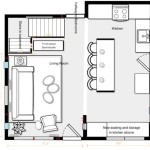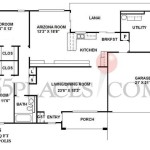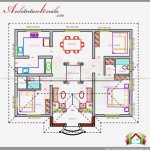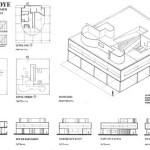Small Colonial Saltbox House Plans: A Timeless Design for Modern Living
The colonial saltbox house, a distinctive architectural style originating in 17th-century New England, continues to captivate homeowners with its charm, simplicity, and efficient design. Characterized by its long, sloping roof that extends down to the rear of the house, resembling the shape of a saltbox, this style offers a unique blend of historical appeal and practical living. Small colonial saltbox house plans are particularly appealing for those seeking a cozy, manageable home with a connection to the past.
This article explores the defining features of small colonial saltbox house plans, examines the benefits of choosing this style, and provides insights into considerations for modern adaptation and design. Understanding the nuances of this architectural form can empower prospective homeowners to make informed decisions when planning their ideal home.
Distinctive Features of Small Colonial Saltbox House Plans
The saltbox house is easily recognizable by its asymmetrical roofline. The gradual slope from front to back creates a distinctive profile, often incorporating a slightly projecting upper story on the front facade. This design element is not merely aesthetic; it contributes to the structural stability and weather resistance of the house, particularly in regions with heavy snow. The long rear roof pitch minimizes the surface area exposed to harsh winter winds and precipitation.
Original saltbox homes were typically constructed with a timber frame, using locally sourced materials such as wood for framing and clapboard siding. Small colonial saltbox house plans often retain this emphasis on natural materials, albeit updated with modern construction techniques. The use of wood siding, cedar shingles, or other traditional materials helps to maintain the authentic look and feel of the house.
The interior layout of a small saltbox house typically focuses on functionality and efficient use of space. The main floor often features a central chimney, with rooms arranged around it. This design allows for optimal heat distribution throughout the house, a crucial consideration in colder climates. Common interior features include exposed beams, wide plank flooring, and fireplaces, which add to the rustic charm of the style.
Windows in saltbox houses were traditionally small and multi-paned, reflecting the limited glass-making technology of the time. Modern adaptations often incorporate larger windows to maximize natural light, while still maintaining the historical aesthetic. Window placement is carefully considered to balance privacy and energy efficiency.
Small porches or entryways are common features of saltbox houses, providing a sheltered transition between the interior and exterior. These entryways are often simple in design, reflecting the unpretentious character of the style. Landscaping around a saltbox house typically emphasizes natural elements, such as native plants and stone pathways, to complement the architectural style.
Benefits of Choosing a Small Colonial Saltbox House Plan
One of the key advantages of a small colonial saltbox house plan is its affordability. The compact footprint and relatively simple design can significantly reduce construction costs compared to larger, more complex house styles. This makes it an attractive option for first-time homebuyers or those seeking to downsize.
The inherent energy efficiency of the saltbox design is another significant benefit. The sloping roof and strategically placed windows help to regulate temperature and minimize energy consumption. The use of natural materials, such as wood, further enhances the energy efficiency of the house. Modern insulation techniques can be easily incorporated into a saltbox design to further improve its thermal performance.
The historical charm and aesthetic appeal of the saltbox style are undeniable. The unique roofline, simple lines, and use of natural materials create a timeless look that resonates with many homeowners. Small colonial saltbox house plans offer a way to connect with the past while enjoying the comforts of modern living. The style lends itself well to customization, allowing homeowners to personalize their living space while staying true to the architectural heritage.
The compact size of a small saltbox house makes it easier to maintain and manage. The smaller footprint translates to less cleaning, less yard work, and lower overall maintenance costs. This makes it an ideal choice for busy individuals or families seeking a low-maintenance lifestyle.
Saltbox houses are well-suited to a variety of climates. The sloping roof effectively sheds snow and rain, while the compact design minimizes exposure to the elements. The use of durable materials, such as wood and stone, ensures that the house can withstand harsh weather conditions. Modern saltbox house plans often incorporate features such as storm shutters and reinforced framing to further enhance their weather resistance.
Considerations for Modern Adaptation and Design
While adhering to the traditional design principles, modern adaptations of small colonial saltbox house plans often incorporate contemporary features to meet the needs of today's homeowners. This may include open-concept living spaces, updated kitchens and bathrooms, and flexible floor plans that can be adapted to different lifestyles.
Integrating modern technology into a saltbox house requires careful planning to maintain the historical aesthetic. Concealing wiring, plumbing, and HVAC systems behind walls and ceilings is essential. Energy-efficient appliances and smart home technology can be incorporated without compromising the overall design. The goal is to seamlessly blend modern functionality with traditional charm.
Adapting the interior layout to accommodate modern conveniences is another important consideration. While the original saltbox design often featured small, compartmentalized rooms, modern homeowners typically prefer more open and flowing spaces. Combining the kitchen, dining, and living areas into a single open space can create a more spacious and inviting atmosphere.
Window placement and size are important factors in modern saltbox house design. While maintaining the historical aesthetic, incorporating larger windows can significantly increase natural light and improve the overall ambiance of the house. Careful consideration should be given to window placement to maximize natural light and minimize heat gain in the summer and heat loss in the winter.
Exterior design elements, such as landscaping and outdoor living spaces, can further enhance the appeal of a small colonial saltbox house. A well-designed garden, patio, or porch can create an inviting outdoor space that complements the architectural style. The use of natural materials, such as stone and wood, can help to create a cohesive and harmonious design.
When planning a small colonial saltbox house, it is crucial to work with an architect or designer who is knowledgeable about the style and its historical context. A qualified professional can help to ensure that the design is both aesthetically pleasing and functional, while also meeting the specific needs and preferences of the homeowner. They can also provide guidance on selecting appropriate materials and construction techniques to ensure that the house is built to last.
Finally, it is important to consider the local building codes and regulations when designing a small colonial saltbox house. These codes may dictate certain requirements regarding setbacks, building height, and materials. Working with a local contractor or builder who is familiar with these regulations can help to ensure that the project is completed in compliance with all applicable laws.

House Plan 94007 Saltbox Style With 1900 Sq Ft 4 Bed 2 Bath

Saltbox Early New England Homes

House Plans Saltbox Colonial Houses

Small Saltbox House Plans

I Would Love Living Here Saltbox House Plans Colonial Houses

Saltbox Style Historical House Plan 32439wp Architectural Designs Plans

45 Best Saltbox House Plans Ideas Houses

580 Small Saltbox House Plans Ideas Houses

Small Saltbox House Plans

Jane Griswold Radocchia The Persistence Of Saltbox Floor Plan








